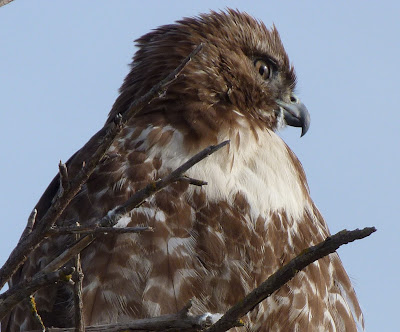Our oldest daughter and a friend recently went to
Chicago. They saw a White Sox Game, took
in a Jimmy Buffet concert, ambled in and out of attractions on the lake front,
rode a tour boat and a water taxi, and used the El. They were there for a weekend and came home
without any bullet holes in them.
But, according to that same article, in terms of shooting
victims per 100,000 residents, more than a dozen U.S. cities are more lethal
than Chicago.
So, what about that “reputation as one of America's most
violent cities”?
I wondered about that myself, as a kid growing up in Chicago. From books and movies and radio programs I
had learned that Al Capone and bunches of gangsters roamed the city with
machine guns, slaughtering at will. But
that ended before I was born, and at its worst it affected very few
people. I never heard any adults tell of
the horrible old days that they lived through, but the reputation was there.
It was a reputation that I had fun with when I enlisted in
the air force. The military was going
through a big buildup in the early months of the Korean War. Because of that buildup, I was transferred
from base to base three times in my first year, and when I wasn’t being moved
around, new guys were coming into whatever outfit I was in at the time.
When you met someone, a ritual took place: You would introduce yourself and say where
you were from. Very early I began
saying, after I gave my name, “I’m from Chicago—wanna see my bullet hole?” That remark always got a smile, such was
Chicago’s reputation.
And it drew a smile from a man I met just last week; such is
Chicago’s reputation today.
But—let’s have the disclaimer first: People are being gunned down in Chicago. That is truly unfortunate, but no matter
where you go or what you do, much of life is a crapshoot. And this post is not travel advice but merely
a little help with sorting out what you get from the media about violence in
Chicago.
Chicago is a city of sides, and most shootings occur on the
South Side. The media mention that,
usually without making a big deal about it, so the impression that’s given is
that Chicago as a whole is a generic term for death by gunshot.
The South Side is the city’s largest side. In the screwy way that the city grew, the
South Side expanded and expanded and expanded, curving east around Lake
Michigan, bumping into the Indiana state line, and adding on to the south. If someone hadn’t put the brakes on, St.
Louis and Memphis would have become suburbs.
It’s a shame that the South Side gets such a bad rap. There are wealthy neighborhoods down there, nice
places to live, along with major universities, important hospitals, beautiful
parks, and the longest stretch of lake front in the city. But there are also pockets of people who are
trigger happy.
Violence has spilled over these days to the West Side. I honestly don’t remember there being a West
Side when I was growing up. There had to
be, but maybe it was under the radar back then.
I grew up on the Northwest Side, the peaceful Northwest Side. My parents allowed me a staggering amount of
freedom (maybe they were hoping that when I went out one night I might not come
back). I could, and did, go anywhere in
the city with only one restriction:
Don’t go to the South Side.
That was in the 1930s and ‘40s, and I suspect that a lot of
people follow that stricture these days:
Stay away from the South Side.
That’s not always easy to do. If you want to go to the University of
Chicago, you have to go to the South Side.
If you want to see the White Sox play, that’s on the South Side. One of the city’s famous St. Patrick’s Day
parades is held deep in the South Side.
But when someone is shot in Chicago it happens at one spot,
and the pavement isn’t slathered with
blood wherever you look.
I didn’t caution my daughter and her friend about
safety. They’ve traveled a lot and have surely
picked up some street smarts. And I
didn’t want to get one of those looks from my daughter that said, Dad, really!
They went, and they had a good time.
And they brought back
chocolates!
***

